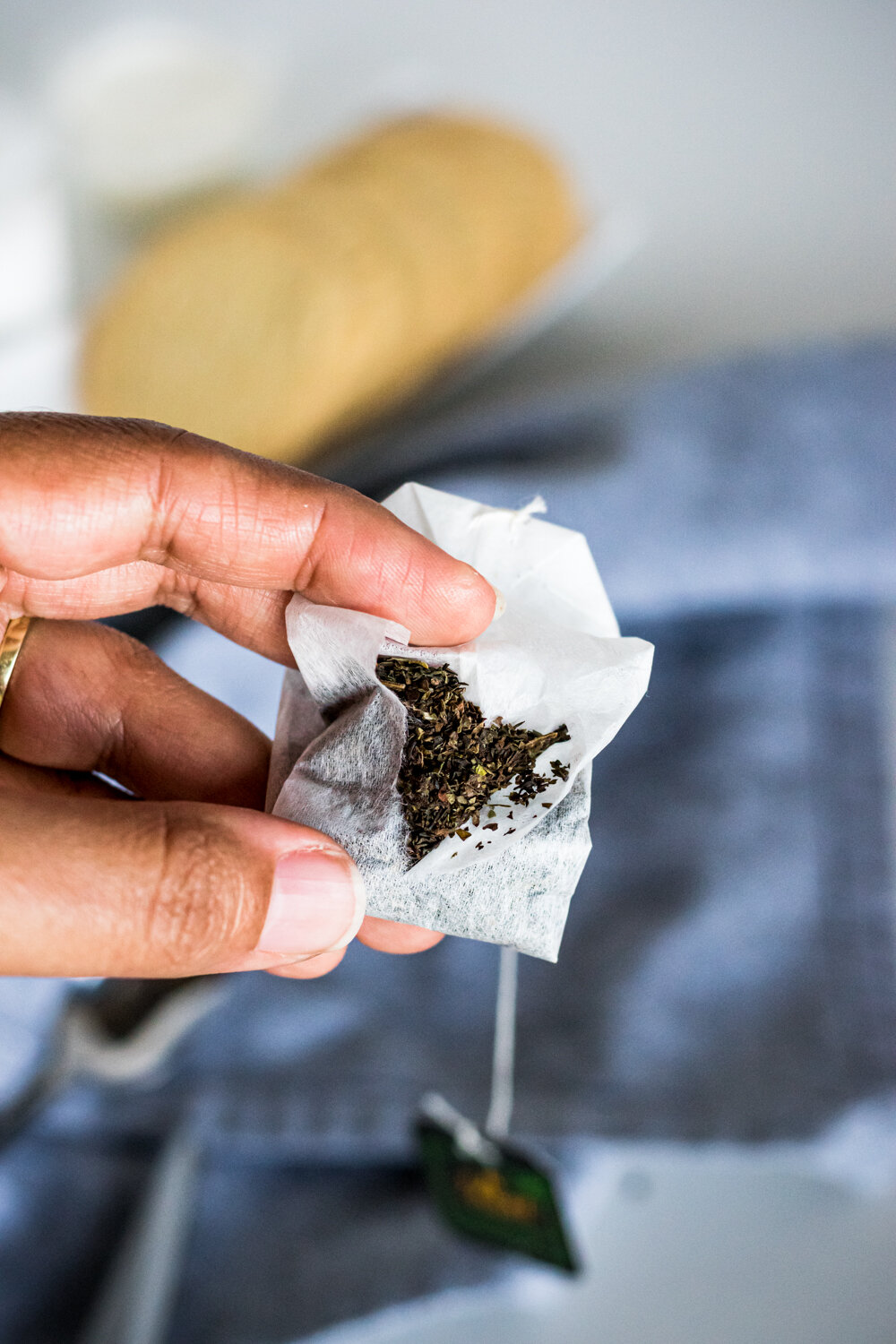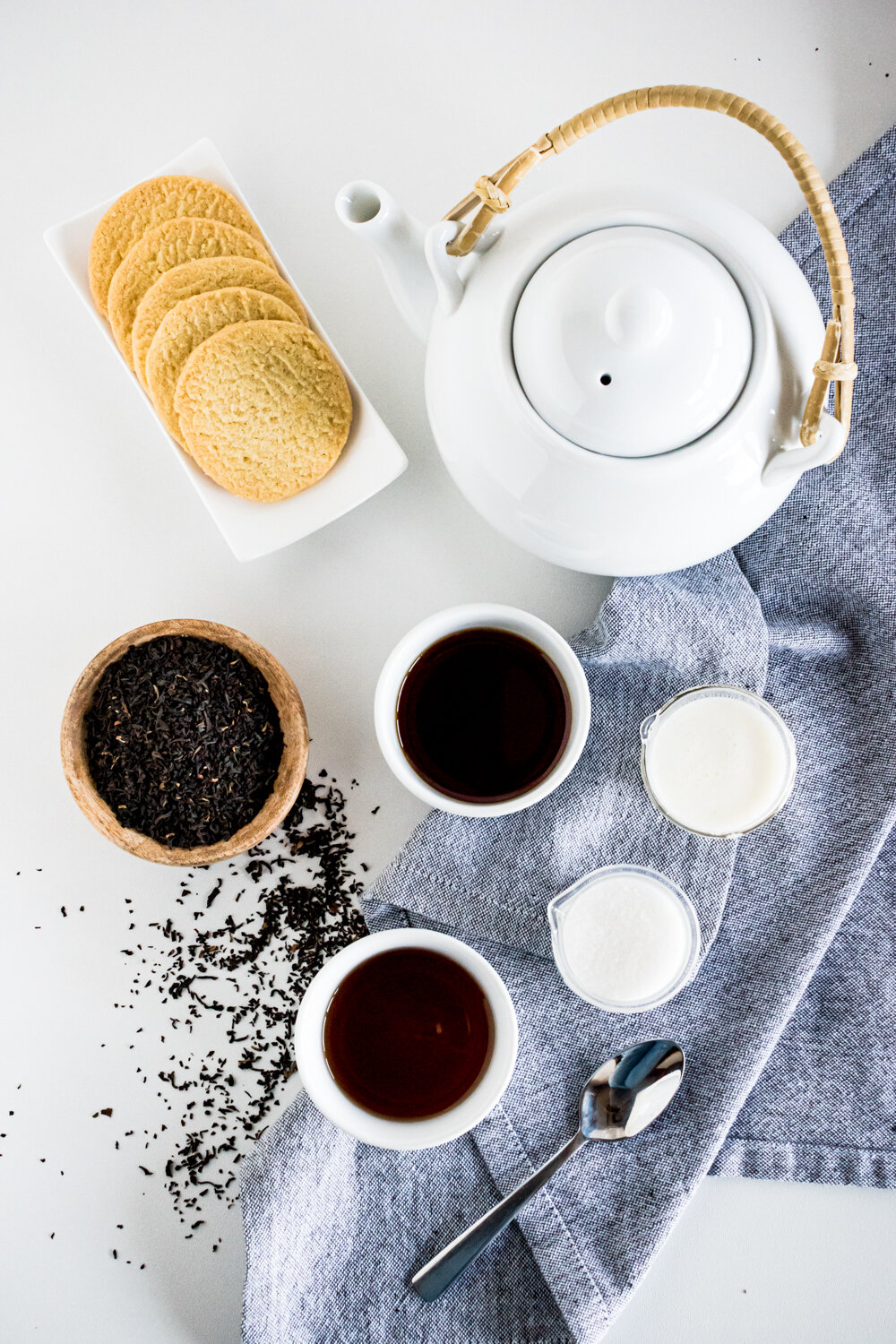Robust Black Tea
Let’s discuss an ingredient that when brewed becomes one of the most consumed beverages in the world, and that ingredient is black tea! This is quintessential to breakfast because it’s served alongside another popular beverage which is coffee. Black tea is served in many ways and used in daily rituals worldwide. It can be served as a simple cup with cream, sugar, and snacks for afternoon tea, steeped with spices to make a chai tea as well as brewed on the stovetop and served in a large pitcher with lots of sugar, ice and a slice of lemon on the side to make southern sweet tea.
Today we are taking a deep dive into the realm of black tea and I’m going to spotlight 3 varieties that are absolutely delicious!
Black tea leaves, as well as other beloved categories of tea like green, white, and oolong, are all harvested from one plant species called Camellia sinensis. I have been drinking tea all of my life and learning this fact honestly blew my mind! I was today years old when I found this out haha! It’s amazing to know that this one plant species has given so much to the world :)
When tea leaves are picked from the Camellia sinensis plant, they are oxidized before use. Their level of oxidation indicates the type of tea you will have and its range of flavor. Time for some science! Oxidation occurs when a substance is exposed to air, which will, in turn, change the makeup of the said substance. A great example of this is enzymatic browning that occurs in fruit like apples. Have you ever peeled an apple and then, later on, noticed it turned brown? That’s oxidation! The oxygen in the air reacted with enzymes that were exposed due to the peeling of the apple. The pigment melanin is formed due to oxidation so the exposed part of the apple turns brown and it has a different taste.
Tea leaves are intentionally left out in the air in order to oxidize and create certain flavors. Black tea leaves are fully oxidized compared to oolong tea leaves that are oxidized to 80%. White tea leaves are slightly oxidized, while green tea leaves are not oxidized at all.
Black tea leaves are separated into 4 categories based on their grade of quality. Ranging from high quality to low quality with regard to flavor, the grades are whole leaf, broken leaf, fannings, and dust respectively.
Most teas make it to your cup in 2 ways, which is loose-leaf and in tea bags for steeping. Loose-leaf allows the water to infuse in every part of the tea leaf which results in a richer flavor and it usually consists of whole tea leaves and the broken leaves. Loose-leaf tea has an extra benefit because it can be brewed multiple times.
Tea bags, on the other hand, provide a source of convenience and easy cleanup for the tea drinker. You simply pop your tea bag in your cup, pour boiling water over the bag and allow it to steep to your preferred brewing time. Most times, when black tea leaves are served in tea bags, they mostly consist of broken leaves, fannings, and dust. The flavor is not as robust and the tea bag can only be used once.
Let’s talk about 3 different varieties of black tea which are Assam, Darjeeling and Ceylon tea.
Assam tea is the most widely consumed black tea worldwide. This tea originates from the Assam state in Northeastern India. It has a rich color and strong flavor that pairs well with cream and sugar. This tea is for folks who love deep flavors. If you want a tea that’s a powerhouse to make southern sweet tea or chai tea, then the Assam variety is a perfect choice!
Darjeeling tea is the darling of black teas. Originating from the Darjeeling district in the Indian state of West Bengal, this tea is floral, beautiful, and bold! It’s often referred to as the champagne of teas and its flavor does not disappoint. This is a tea that can be enjoyed without sugar and cream. It honestly stands on its own!
Last on the list, we have Ceylon tea. I would say this is one of my favorite black teas because it has rich notes of citrus and I love me some citrus fruit! This tea originates from the island nation of Sri Lanka. Its name comes from the fact that Sri Lanka was once known as Ceylon before they gained their independence from under British rule. This robust tea pairs well with milk and sugar. Since it already has flavors of citrus, it also pairs well with slices of lemon and orange.
That’s all for today and I hope you enjoyed this culinary lesson on black tea! If you have a favorite variety of black tea, please share it with me in the comments below. Stay tuned for a special recipe this Friday that features black tea and celebrates the Juneteenth holiday! Yay!
-Shari :)
Photography & Styling by A Certain Aesthetic













